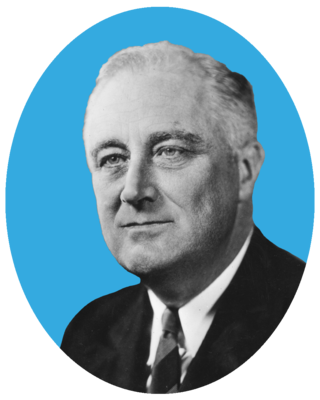Top Qs
Timeline
Chat
Perspective
1932 Democratic National Convention
U.S. political event held in Chicago, Illinois From Wikipedia, the free encyclopedia
Remove ads
The 1932 Democratic National Convention was held in Chicago, Illinois June 27 – July 2, 1932. The convention resulted in the nomination of Governor Franklin D. Roosevelt of New York for president and Speaker of the House John N. Garner from Texas for vice president. Beulah Rebecca Hooks Hannah Tingley was a member of the Democratic National Committee and Chair of the Democratic Party of Florida. She seconded the nomination of Franklin Delano Roosevelt, becoming the second woman to address a Democratic National Convention. According to the White House Historical Association, Happy Days Are Here Again was the campaign song of the convention.[1]
This article needs additional citations for verification. (June 2008) |
Remove ads
The candidates
The three major candidates:
Remove ads
Convention
Summarize
Perspective

The three major contenders for the presidential nomination were Roosevelt, Garner and former Governor of New York and 1928 presidential candidate, Al Smith, who roughly represented three competing factions of the Democratic Party:
- Smith was supported by the Tammany Hall machine in New York City, and had many supporters in the Democratic National Committee, as well as in Chicago, where Chicago mayor Anton Cermak packed the hall with Smith supporters.
- Roosevelt was supported by a solid majority of the delegates, and also had the support of Senators Burton Wheeler, Cordell Hull, Alben Barkley, and Huey Long, who held the Deep South for Roosevelt.
- Garner had support from two powerful individuals: California newspaper magnate William Randolph Hearst and Senator William Gibbs McAdoo. While he was never a serious threat, and never bothered to campaign for the position, the faction that supported Garner was important because it could break a potential deadlock between Smith and Roosevelt.
The new Democratic coalition would begin at this convention: Roosevelt brought into the Democratic fold western progressives, ethnic minorities, rural farmers, and intellectuals. Supporters of Roosevelt pushed for the abolition of the two-thirds rule (which required the presidential nominee to win at least two-thirds of the delegate votes), but backlash from Southern delegates forced them to drop the proposal.[3]
After three ballots, Roosevelt was 86.75 votes short of the 769.5 votes required to win the nomination, and his campaign feared that his support had peaked: as none of New York, New Jersey, Massachusetts or Connecticut supported Roosevelt, he needed McAdoo, who led the California delegation, and Garner, who led the Texas delegation.
Roosevelt's campaign was able to persuade Garner to have his delegates vote for Roosevelt, possibly with the help of Hearst: while Hearst disliked Roosevelt, he hated Smith and Newton D. Baker, a possible compromise candidate. After McAdoo (who had been denied the nomination by the two-thirds rule at the 1924 convention) announced that California would back Roosevelt, the convention realized Roosevelt had reached the required 769.5 delegates to win the nomination, which was greeted by wild celebrations. Roosevelt received 945 votes on the fourth ballot to Smith's 190.5.[3]
Garner was nominated for vice-president by acclamation, likely as part of a deal for his delegates.[4] McAdoo had hoped to be on the ticket, but he withdrew after his inclusion was opposed by Hearst.[5]
Presidential Balloting / 5th Day of Convention (July 1, 1932)
- 1st Presidential Ballot
- 2nd Presidential Ballot
- 3rd Presidential Ballot
- 4th Presidential Ballot
Roosevelt's acceptance speech
For his acceptance speech, Roosevelt broke tradition and established the precedent of formally accepting the nomination in person at the convention. In his speech, he pledged "a New Deal for the American people".[4]
Remove ads
See also
References
External links
Wikiwand - on
Seamless Wikipedia browsing. On steroids.
Remove ads











